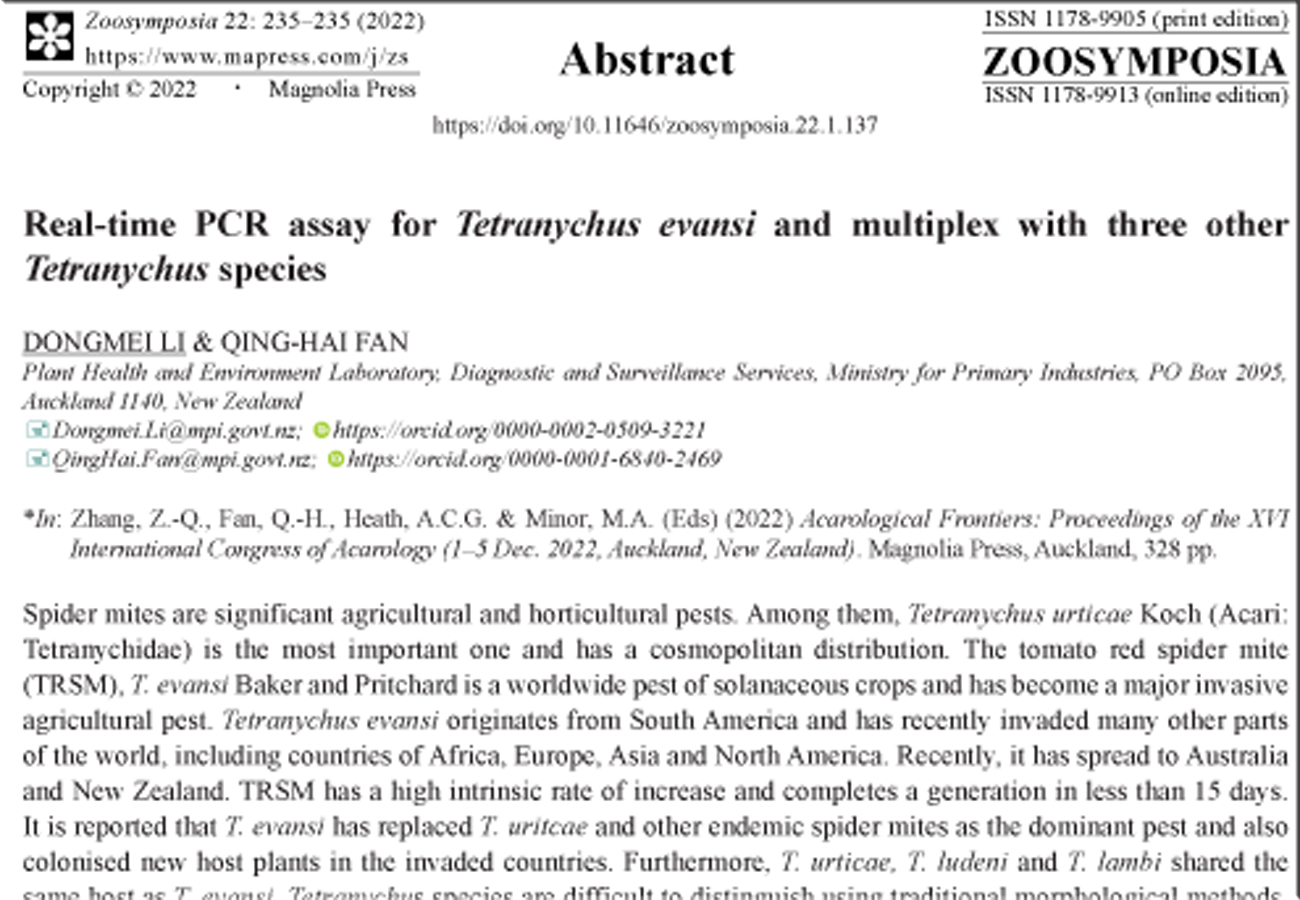Abstract
Spider mites are significant agricultural and horticultural pests. Among them, Tetranychus urticae Koch (Acari: Tetranychidae) is the most important one and has a cosmopolitan distribution. The tomato red spider mite (TRSM), T. evansi Baker and Pritchard is a worldwide pest of solanaceous crops and has become a major invasive agricultural pest. Tetranychus evansi originates from South America and has recently invaded many other parts of the world, including countries of Africa, Europe, Asia and North America. Recently, it has spread to Australia and New Zealand. TRSM has a high intrinsic rate of increase and completes a generation in less than 15 days. It is reported that T. evansi has replaced T. uritcae and other endemic spider mites as the dominant pest and also colonised new host plants in the invaded countries. Furthermore, T. urticae, T. ludeni and T. lambi shared the same host as T. evansi. Tetranychus species are difficult to distinguish using traditional morphological methods, and the molecular techniques such as mitochondrial COI and ITS sequences have greatly assisted in the diagnosis of those species. However, the methods include post-PCR steps and are time-consuming. In contrast, real-time PCR assays which omit those post-PCR steps can provide rapid detection. The real-time PCR assay to identify T. urticae, T. ludeni and T. lambi were already developed and validated by us (Li et al., 2015) and by Australian scientists (Chen et al., 2020), but no assay targeting T. evansi is available. Therefore, we developed and validated a TaqMan real-time PCR protocol for rapid detection of T. evansi, by targeting ITS1 gene region. The assay specificity was tested against the closely related species, i.e., T. collyerae, T. lambi, T. ludeni, T. kanzawai, T. parakanzawai,
- pueraicola, T. truncatus, T. turkestani and T. urticae. Plasmid DNA containing ITS1 sequence of T. evansi was used as standards for sensitivity tests of the real-time PCR assay. The detection limit of the assay is 10 copy of the target region, indicating that it can detect DNA from different life stage of the target species, i.e. an egg, a larva, a nymph or an adult. Furthermore, multiplex assay targeting T. evansi, T. ludeni, T. lambi and T. urticae have been validated for detection of the four species. The validation showed that the assay against T. evansi can run as singleplex and also as multiplex by targeting the four species simultaneously. This multiplex assay has been used in the surveillance programme in New Zealand and demonstrated its efficiency in detection of the target species. Moreover, the assay will be very useful for the quick identification of intercepted specimens at border and post border.
References
Chen, Y., Woolley, L., Nguyen, D., Gupta, R., Chandler, G.T., Nehl, D. & Herron, G.A. (2020) Development and use of a single real-time PCR assay to identify the three spider mite species Tetranychus urticae, Tetranychus lambi and Tetranychus ludeni (Acari: Tetranychidae). Austral Entomology, 59 (3), 630–638. https://orcid.org/10.1111/aen.12457
Li, D., Fan, Q.-H., Waite, D.W., Gunawardana, D., George, S. & Kumarasinghe, L. (2015) Development and validation of a real-time PCR assay for rapid detection of two-spotted spider mite, Tetranychus urticae (Acari: Tetranychidae). PLoS One, 10 (7), e0131887. https://orcid.org/10.1371/journal.pone.0131887


